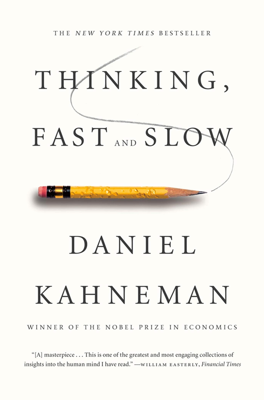Summary
Understanding Two Modes of Thinking: System 1 and System 2
- System 1 operates automatically and quickly, with little effort and no sense of voluntary control, handling rapid associations and reactions. It's adept at managing routine tasks but susceptible to cognitive biases.
- System 2 allocates attention to effortful mental activities and is activated when a situation requires more intricate thought and deliberation. It's slower, more conscious, and logical but often lazy, defaulting to System 1 unless necessary.
Interaction and Influence
- System 1 and System 2 are interdependent, with the former often providing initial impressions and suggestions that System 2 chooses to either endorse or correct. This interaction shapes our judgments, decisions, and actions, with System 2 acting as a monitor and controller but sometimes failing to intervene due to its energy-consuming nature.
Key Concepts and Cognitive Biases
- The book highlights several cognitive biases and illusions that affect our thinking. For example, the anchoring effect shows how people rely too heavily on the first piece of information offered when making decisions. The availability heuristic leads people to overestimate the importance of information that comes to mind easily but might not be the most relevant or accurate.
- Kahneman discusses how cognitive ease, or the fluidity of our thought processes, can mislead us to feel overly confident in our judgments, mistaking ease for truth.
Implications and Applications
- The understanding of these two systems has profound implications for everything from individual decision-making and psychological well-being to economics and public policy. By recognizing how these systems work, individuals and institutions can make better choices by structuring decisions in ways that exploit System 1’s strengths while guarding against its weaknesses.
- Kahneman also emphasizes the importance of monitoring and control mechanisms within System 2 to mitigate the potential errors and biases of System 1, advocating for more self-awareness and critical thinking in both personal and professional arenas.
Practical Advice
- Kahneman suggests various ways to refine our decision-making processes, including delaying decisions when possible to allow System 2 to engage more fully, questioning initial impressions, and seeking contradicting information to challenge our assumptions.
- At an organizational and societal level, understanding these cognitive processes can help in designing better decision environments that nudge people towards more optimal decisions and behaviors.
Thinking, Fast and Slow provides a framework for understanding how thought processes can be manipulated, improved, and understood, offering both a theoretical and a practical guide to better decision-making.
Per-chapter summary
- The Characters of the Story
- Attention and Effort
- The Lazy Controller
- The Associative Machine
- Cognitive Ease
- Norms, Surprises, and Causes
- A Machine for Jumping to Conclusions
- How Judgments Happen
- Answering an Easier Question
- The Law of Small Numbers
- Anchors
- The Science of Availability
- Availability, Emotion, and Risk
- Tom W’s Specialty
- Linda: Less is More
- Causes Trump Statistics
- Regression to the Mean
- Taming Intuitive Predictions
- The Illusion of Understanding
- The Illusion of Validity
- Intuitions Vs. Formulas
- Expert Intuition: When Can We Trust It?
- The Outside View
- The Engine of Capitalism
- Bernoulli’s Errors
- Prospect Theory
- The Endowment Effect
- Bad Events
- The Fourfold Pattern
- Rare Events
- Risk Policies
- Keeping Score
- Reversals
- Frames and Reality
- Two Selves
- Life as a Story
- Experienced Well-Being
- Thinking About Life
